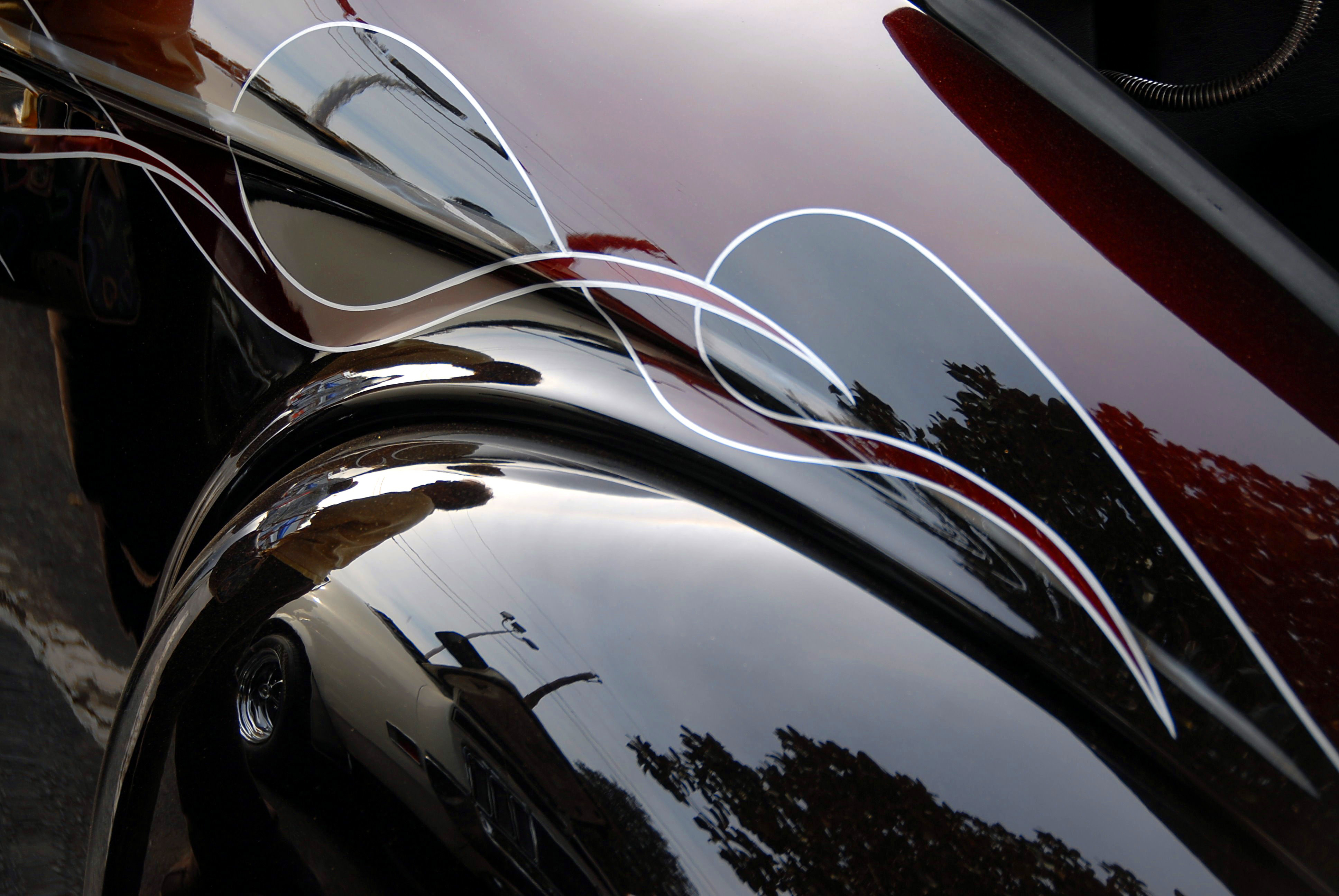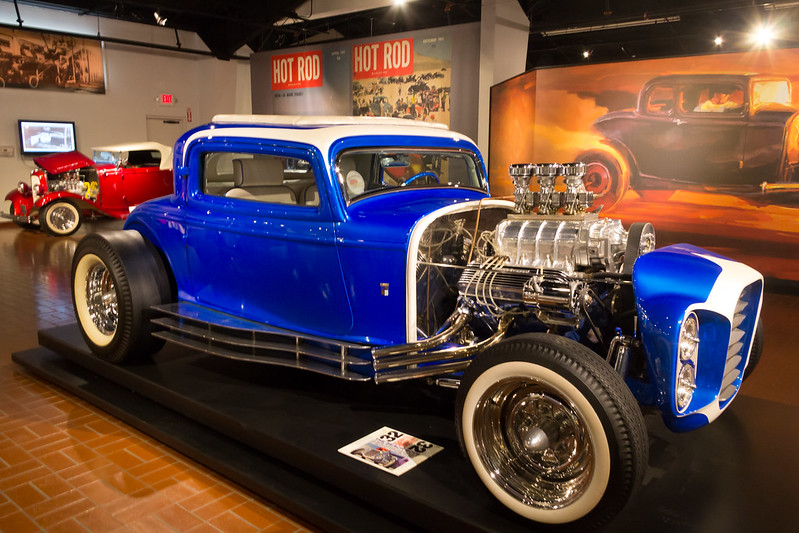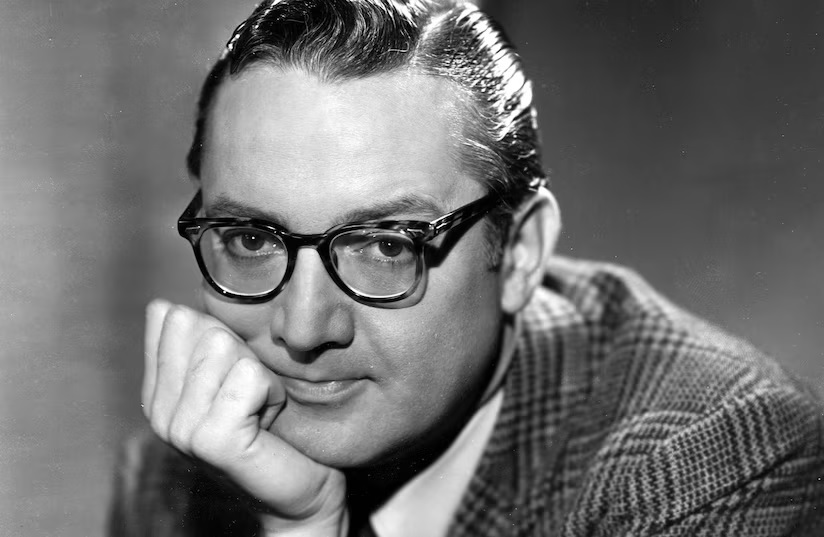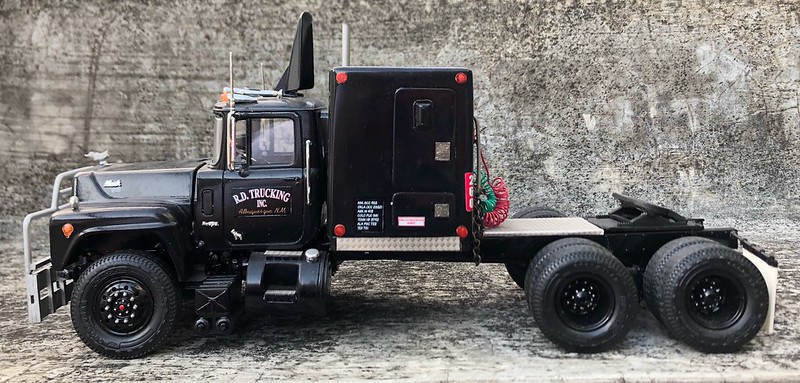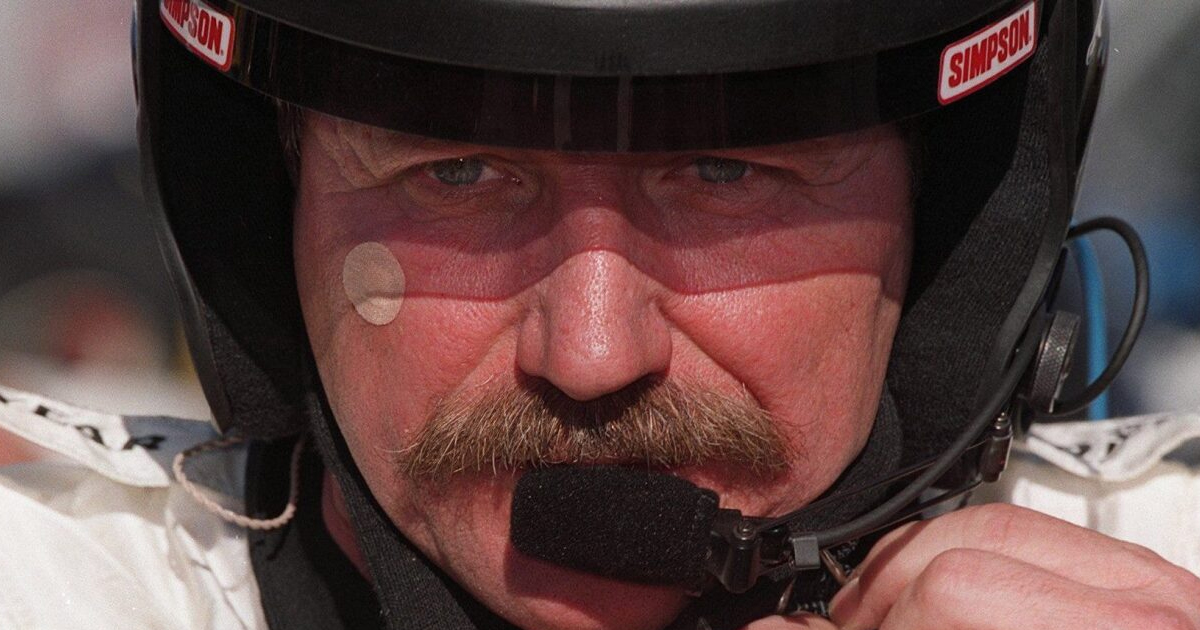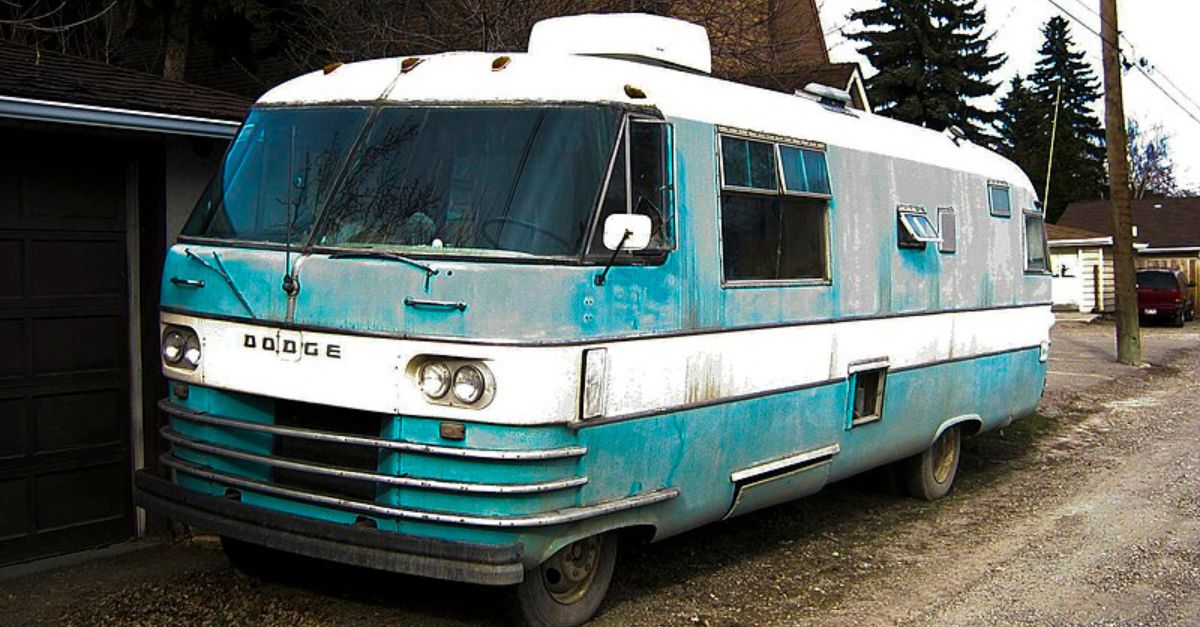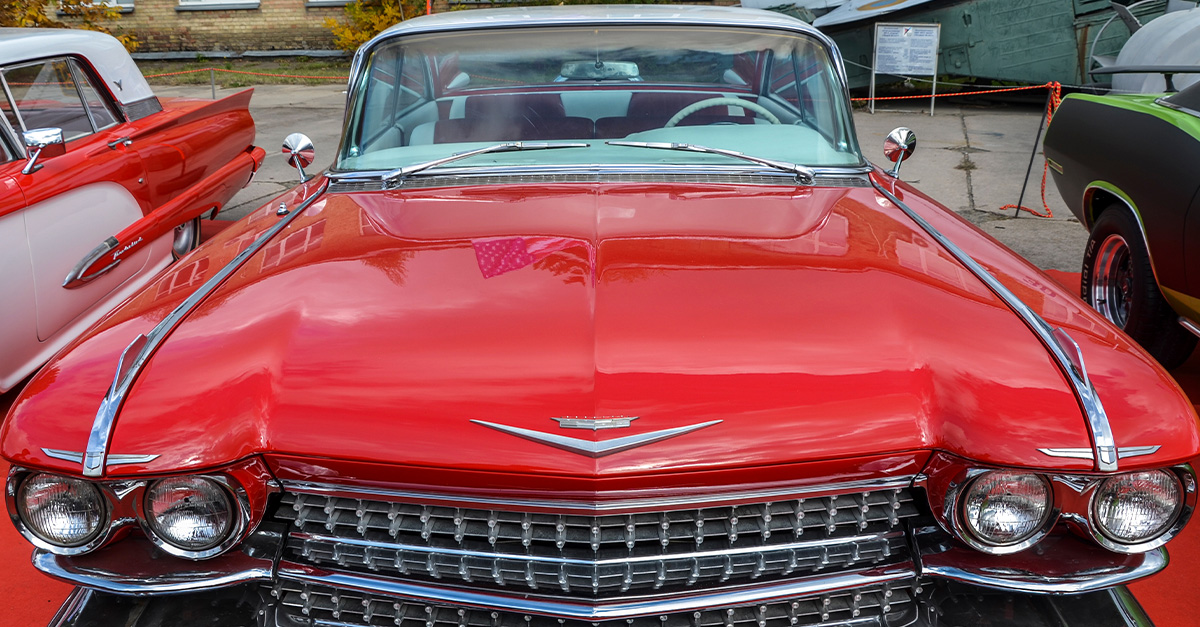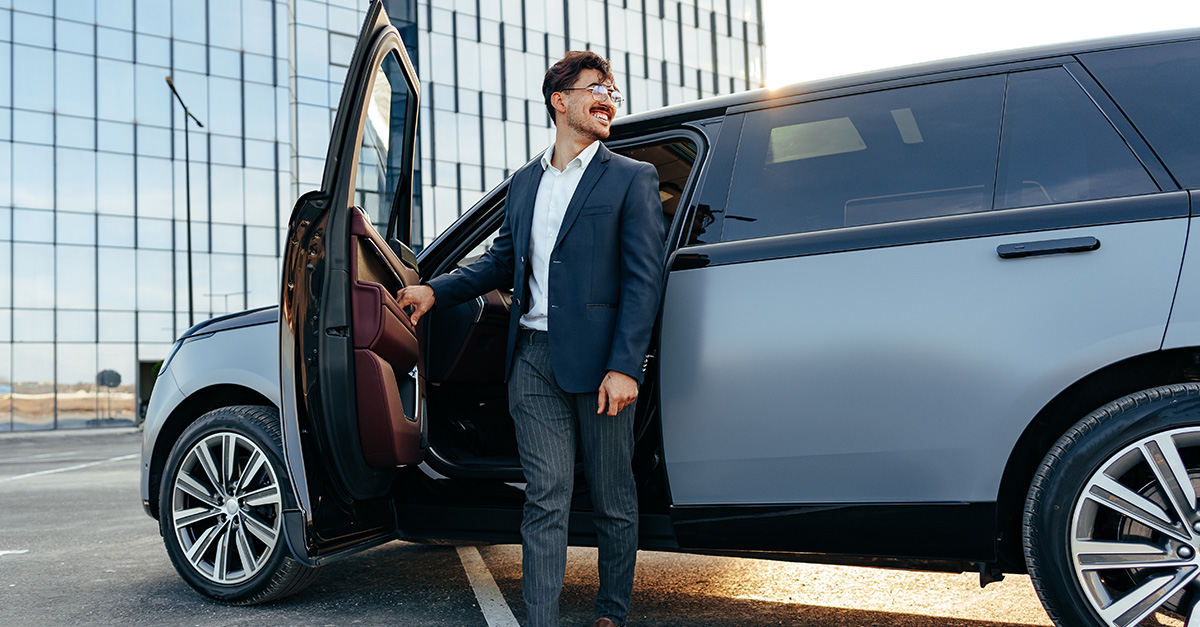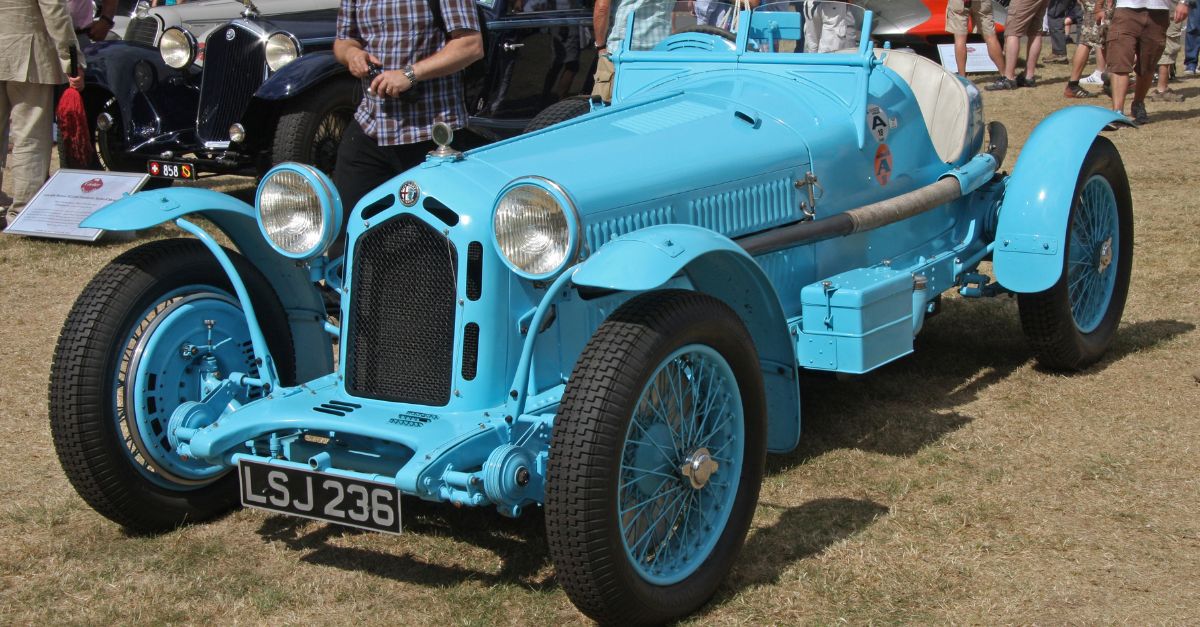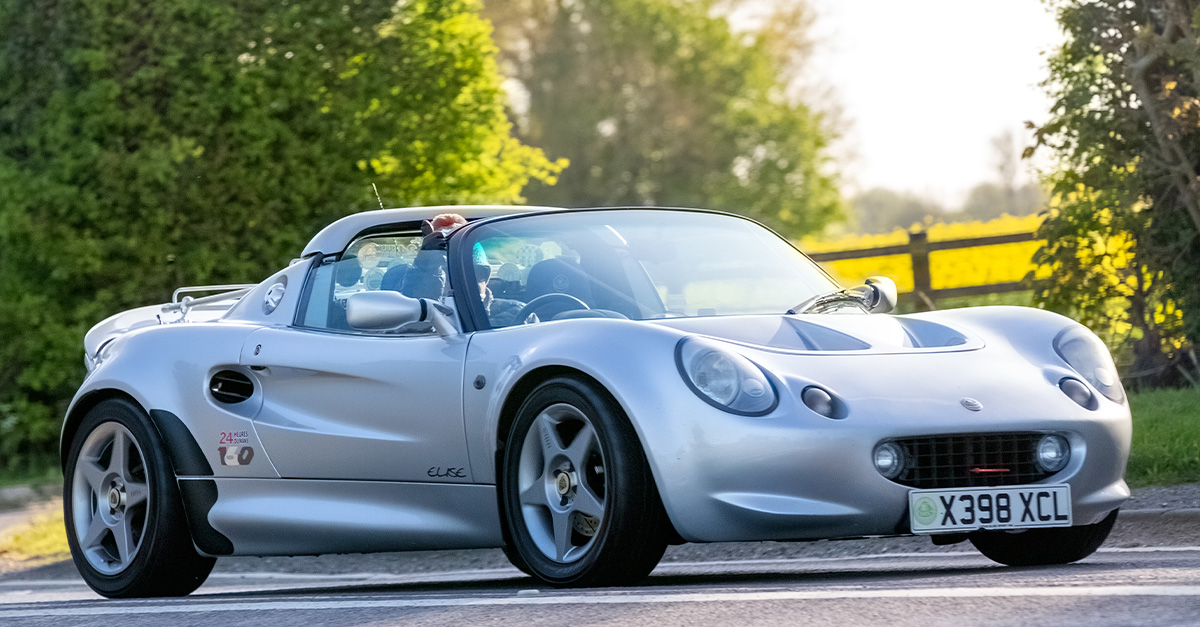Dean Jeffries' Custom Cars Are Out Of This World
Hot rod culture reached its peak in the 1960s in Southern California—and Dean Jeffries was the greatest custom car builder of them all.

He's A California Transplant
Dean Jeffries is a California icon, but he was actually born in Iowa. He might have lived the life of a farmer, except for one thing...
He Was Born In The Depression
Jeffries was born in 1933 at the height of the Great Depression. His father had no job prospects in Iowa, so the family packed up and headed to the Sunshine State in hope of a better future.
From his revolutionary pinstriping work to his custom cars for Hollywood to his friendships with celebrities, I think it's safe to say Dean Jeffries found that better future.
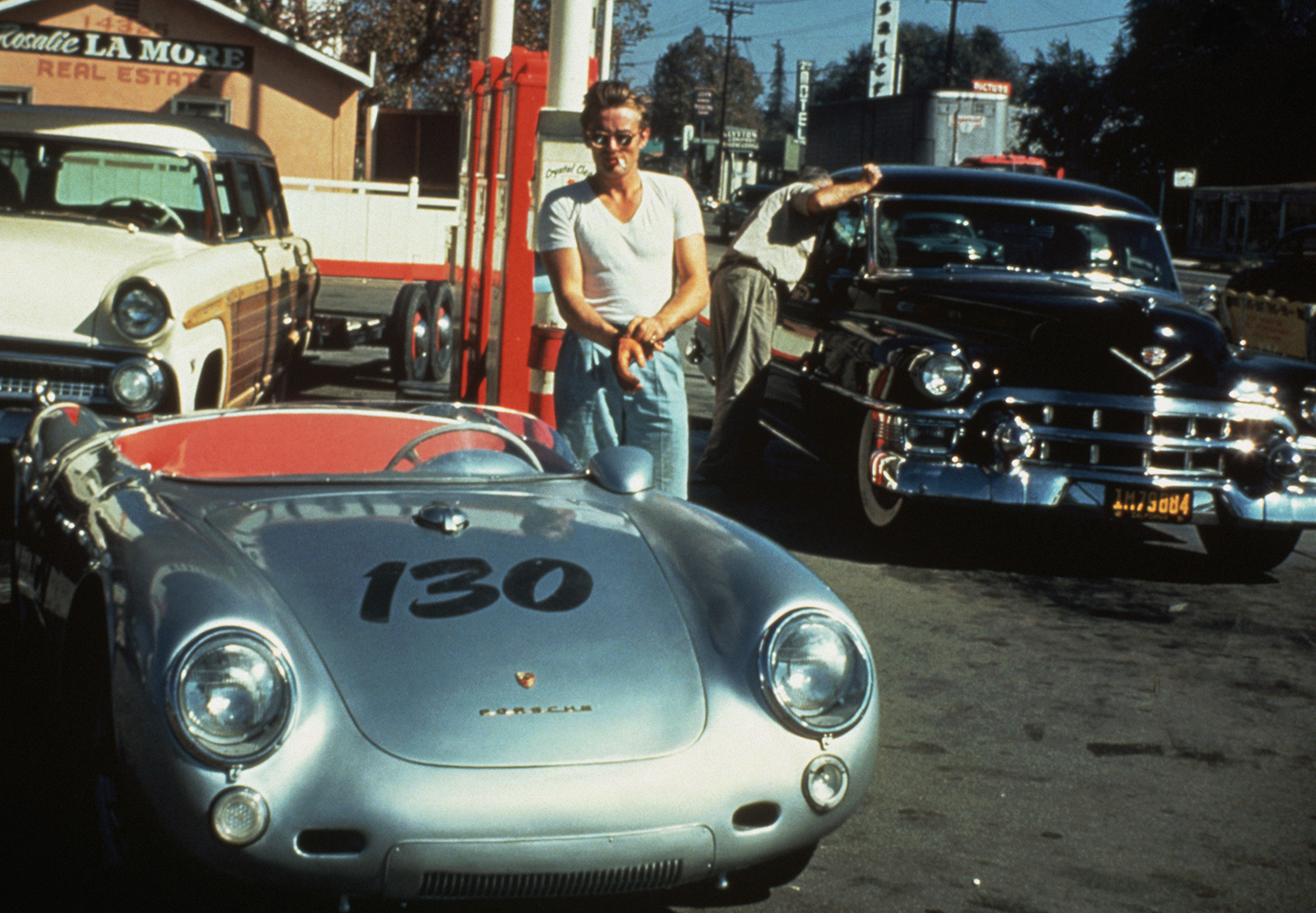 Bettman, Getty ImagesJames Dean with his Porsche 550 Spyder, custom-painted by Dean Jeffries before his fatal crash.
Bettman, Getty ImagesJames Dean with his Porsche 550 Spyder, custom-painted by Dean Jeffries before his fatal crash.
They Moved To Compton
The Jeffries family moved Compton in LA County, where Dad found work as a mechanic and a truck driver. Dean quickly became interested in cars—but his dad wasn't the only reason.
 Gerry Stiles/The Enthusiast Network/Getty ImagesDean Jeffries' Custom Oldsmobile Toronado, dubbed the "Deano Toronado"
Gerry Stiles/The Enthusiast Network/Getty ImagesDean Jeffries' Custom Oldsmobile Toronado, dubbed the "Deano Toronado"
His Neighbor Was Another Legend
It also happened that the Jeffries family moved in across the street from Troy Ruttman, an aspiring race car driver. who later became the youngest person ever to win the Indy 500. It was a match made in heaven.
They Were Fast Friends
Both Ruttman and Jeffries were obsessed with racing. But, if they wanted to go as fast as possible, they needed to customize their cars. But they were in luck.
They Lived Near A Legendary Shop
Right around the corner from Jeffries and Ruttman was George Barris's shop Barris Kustoms, where he built legendary custom cars like the Munster Koach and Adam West's Batmobile.
He Dropped Out Of School
Jeffries wanted to attend art school, but his family was too poor. Realizing that life wasn't in the cards, he dropped out of high school at age 17.
 The Enthusiast Network, Getty Images
The Enthusiast Network, Getty Images
He Enlisted
Without many other prospects, the 17-year-old dropout talked his way into the Army, soon getting stationed in Sanhoffen, West Germany. There, Jeffries met a strange old man who changed his life.
 Dick Day/The Enthusiast Network/Getty Images
Dick Day/The Enthusiast Network/Getty Images
He Met A Master
While in Germany, Jeffries came across an old man who had pinstriped furniture and pianos his entire life. The old German showed this young American serviceman his craft, and Jeffries found his artform.
He Learned From The Best
When Jeffries came back home, he got a job working nights in a machine shop. He spent his days learning about custom cars from George Barris and another legendary artist: Kenny Howard, better known as Von Dutch. Yes, that Von Dutch.
 The Enthusiast Network, Getty Images
The Enthusiast Network, Getty Images
They Were A Pair
Dean Jeffries and Kenny Howard spent so much time together people called them, "Von Dutch and the Kid". Jeffries even designed the iconic "Winged Eyeball" that Von Dutch used for years and just never made a big deal of it.
 The Enthusiast Network, Getty Images
The Enthusiast Network, Getty Images
His Connections Paid Off
When Jeffries' old buddy Troy Ruttman joined a team racing in the Indianapolis 500, he convinced the team owner to get Jeffries to pinstripe all the team's cars. People started to notice his work.
 The Enthusiast Network, Getty Images
The Enthusiast Network, Getty Images
He Painted Cars For The Pros
After seeing the work he'd done with Ruttman's team, Mobil Oil hired Jeffries to paint their Indy race cars, which introduced him to a lot of race car drivers—AKA a lot of future customers of Jeffries' custom car work.
 The Enthusiast Network, Getty Images
The Enthusiast Network, Getty Images
He Was Friends With James Dean
Fast car enthusiast James Dean ran in the same circles as Jeffries, and they quickly became friends. The movie star loved a beautiful vehicle, and Jeffries made the most beautiful cars in town.
Dean Had Him Paint His Porsche
As soon as James Dean bought his brand new Porsche 550 Spyder, he brought it to Jeffries' shop. He wanted not only Jeffries' iconic pinstripes, but for him to write "Little Bastard" on the rear.
Tragically, neither car nor driver would survive the week.
His Work Did Not Last Long
James Dean's fatal car crash in "Little Bastard" occurred mere days after Jeffries had painted it.
He Got His Own Space
By 1956, Jeffries was good enough that George Barris offered him a job. Jeffries didn't want a job—but he did happily rent his own shop space from Barris, right next door to Barris Kustoms. But the street wasn't big enough for the both of them.
 The Enthusiast Network, Getty Images
The Enthusiast Network, Getty Images
He Moved To Hollywood
As Jeffries grew from "the kid who hangs around" to "#1 competition," it was only a matter of time before his set up right next door to Barris Kustoms reached its expiry date. In 1958, he packed up shop and moved to Hollywood.
His Mentor Became His Rival
Jeffries and Barris would continue a professional rivalry for the rest of their lives, with Barris taking credit for Jeffries' work many times over the years.
He Ran A Studio Of Style
If you didn't already know that Dean Jeffries' shop was a little different that other garages, the sign on the door would make it clear: Jeffries Studio Of Style.
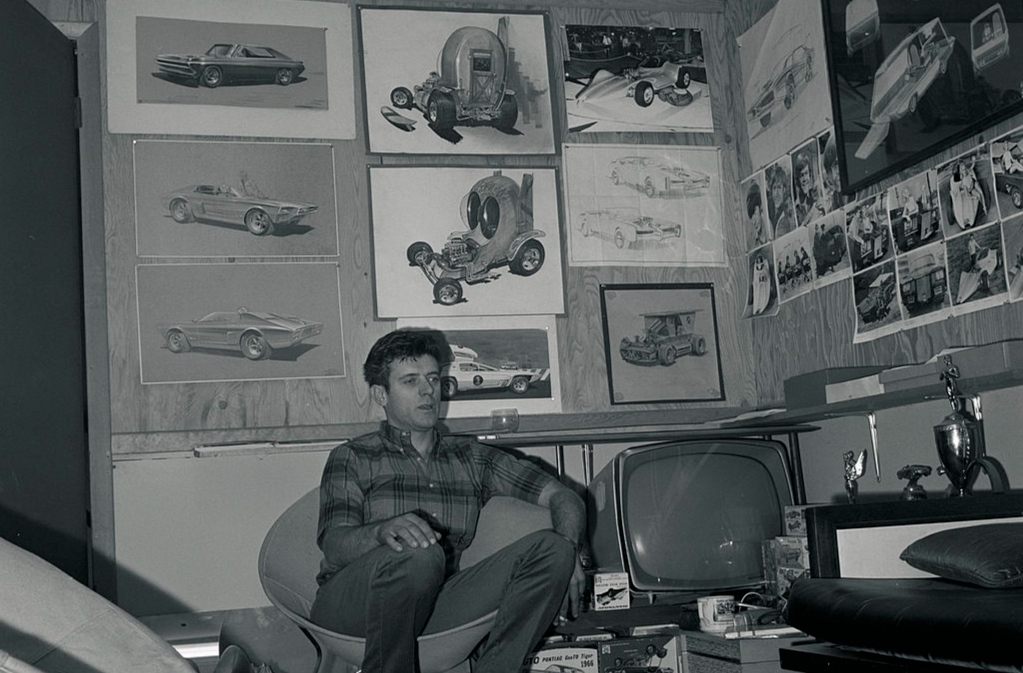 The Enthusiast Network, Getty Images
The Enthusiast Network, Getty Images
He Worked For Celebrities
James Dean wasn't the only Hollywood star who was interested in Jeffries' work. Celebs like Steve McQueen, James Garner, and even Elvis started coming to Jeffries' shop just to hang out and gawk at his creations.
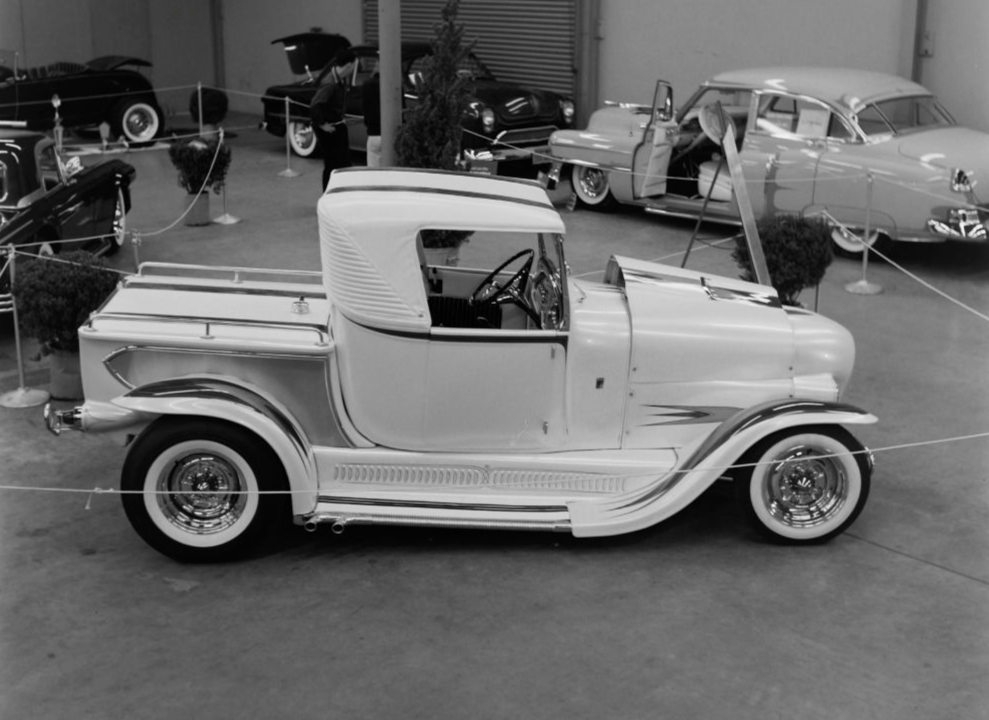 The Enthusiast Network, Getty Images
The Enthusiast Network, Getty Images
He Built The Little Deuce Coupe
"Little Deuce Coupe" isn't just the name of a song, it's an actual car. You can see it on the cover for the Beach Boys' album of the same name—and yes, it's a Dean Jeffries custom hot rod.
He Put Flames On Cars
Dean Jeffries was one of the artists who pioneered painting sinuous flames on the front end of a car, so Guy Fieri owes him a thank you.
 The Enthusiast Network, Getty Images
The Enthusiast Network, Getty Images
He Could Do It All
More an artist than anything else at first, Jeffries' skills at fabrication grew as the years went by, and by the early 60s he was building full-blown custom creations out of his shop.
 The Enthusiast Network, Getty Images
The Enthusiast Network, Getty Images
He Made A Legendary Car
In 1963, Jeffries wanted to prove that he could compete with older builders like his mentor Barris. That drive pushed him to build probably his most famous custom car: the futuristic Mantaray.
 The Enthusiast Network, Getty Images
The Enthusiast Network, Getty Images
He Was Inspired By Nature
While at an aquarium during a trip to Seattle, Jeffries was struck by the beauty and grace of the manta ray. He wanted to try and capture that in a car, so he got to work.
 The Enthusiast Network, Getty Images
The Enthusiast Network, Getty Images
He Worked Fast
Jeffries only worked on the Mantaray on nights and weekends while still working full time in his shop. Still, he finished the custom in just three months. The final result was unlike anything anyone had ever seen.
 The Enthusiast Network, Getty Images
The Enthusiast Network, Getty Images
It Looked Unlike Anything Else
With its bubble windshield, sleek, asymmetrical design, and single headlight positioned at the car's front point, the Mantaray quite simply blew people's minds.
 The Enthusiast Network, Getty Images
The Enthusiast Network, Getty Images
It Blew People Away
After its debut, the Mantaray won Best Experimental Car at the 1964 Pomona car show. The design was so eye-catching, it transcended the car world into popular culture.
 The Enthusiast Network, Getty Images
The Enthusiast Network, Getty Images
They Put It On TV
The Mantaray stood out so much that soon after its debut, it was featured on both Steve Allen's The Tonight Show and in the teen movie Bikini Beach.
There's An Easter Egg On The Car
If you look very closely, you'll see the word "Cobra" on the Mantaray's valve covers. When Carroll Shelby built the first of his iconic Cobras, he had Jeffries paint it.
Shelby repaid the favor by providing both the engine and the transmission for the Mantaray.
He Iterated On Himself
Jeffries later combined his Mantaray and his love for buggies in the Kyote, a dune buggy with a similar look to his iconic custom.
 Eric Rickman/The Enthusiast Network/Getty Images
Eric Rickman/The Enthusiast Network/Getty Images
He Built Buggies
Jeffries actually went into production on the Kyote in 1969. With a staff of 15 people, Jeffries built around 1100 Kyotes out of his shop. But soon, the demands of Hollywood meant the Kyote had to go by the wayside.
 Eric Rickman/The Enthusiast Network/Getty Images
Eric Rickman/The Enthusiast Network/Getty Images
He Had All The Right Connections
NBC was looking for someone to make a custom car for their new sitco. With his shop right in Hollywood and his futuristic custom all over the TV, Jeffries was an obvious choice—and he didn't disappoint.
 The Enthusiast Network, Getty Images
The Enthusiast Network, Getty Images
He Built The Monkeemobile
The show was The Monkees, and they needed a Monkeemobile. To make it, Jeffries started with a Pontiac GTO. Then he got creative.
 Bruce Alan Bennett, Shutterstock
Bruce Alan Bennett, Shutterstock
It Looked Like Nothing Else
By the time he was done with it, the Monkeemobile had pointed grille, GMC blower sticking straight up out of the recessed hood, and a rear-deploying parachute. It was awesome.
 The Enthusiast Network, Getty Images
The Enthusiast Network, Getty Images
His Creation Was A Hit
The Monkees was a hit—and so was the Monkeemobile. The quickly started selling scale models of Jeffries' custom in stores.
 The Enthusiast Network, Getty Images
The Enthusiast Network, Getty Images
He Became "The Guy"
The Monkeemobile solidified Jeffries as "The Guy" if you wanted a custom car in Hollywood. Next to come knocking was The Green Hornet.
 ETC@USC, CC BY-SA 2.0, Wikimedia Commons
ETC@USC, CC BY-SA 2.0, Wikimedia Commons
He Built Black Beauty
When ABC rebooted The Green Hornet as a TV series in 1966, Jeffries was the obvious choice to build the newest version of Kato's car, Black Beauty.
As usual, he didn't disappoint.
 Flickr, CC BY 2.0, Wikimedia Commons
Flickr, CC BY 2.0, Wikimedia Commons
It Hid Surprises
Jeffries turned what started as a fairly mundane 1966 Imperial Crown convertible into "Black Beauty," a sleek, black and green custom with a retractable cannon in the front grille.
It Wasn't Just Cars
Turns out Jeffries was also an expert in dune buggies—and built his share of customs! Remember the moon buggy that James Bond drives in Diamonds Are Forever? Another Dean Jeffries Custom.
Trolleys Too
There aren't any trolleys in real life that look as good as the trolley in Who Framed Roger Rabbit? That's because the one in the movie was a Dean Jeffries custom.
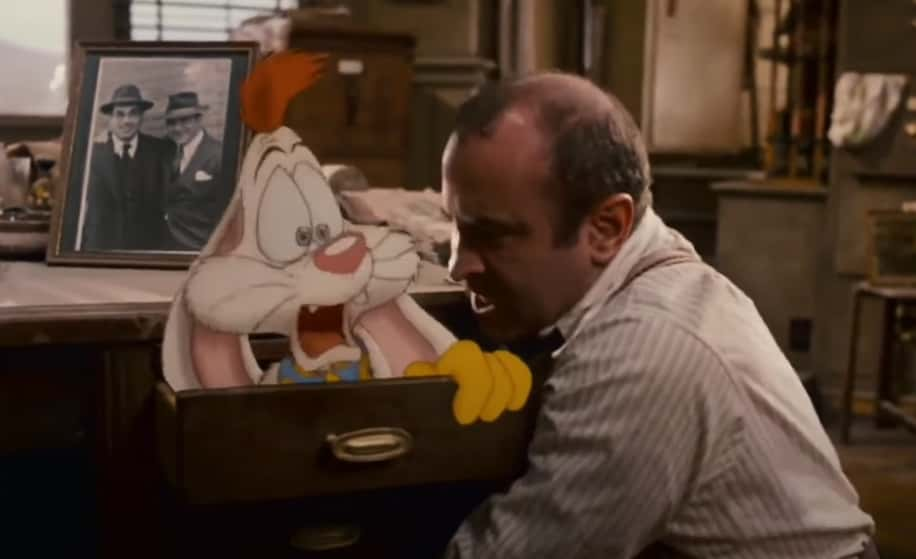 Who Framed Roger Rabbit (1988), Touchstone Pictures
Who Framed Roger Rabbit (1988), Touchstone Pictures
He Did Entire Movies
Some jobs were bigger than others. Maybe he just needed to build a single car—or maybe he had to oversee custom fabrication for an entire fleet of semi-trucks, like he did for 1978's Convoy.
He Couldn't Finish The Batmobile
Jeffries was asked to design the Batmobile for the 1966 TV series with Adam West. He started the job—but he didn't have the time to finish the project. He handed it off to his old mentor, George Barris, who took over.
He Got Involved
Nobody could build cars like Dean Jeffries—and no one could drive them either. No wonder he ended up with stunt driving credits on dozens of movies, from The Blues Brothers to The Fugitive.
 The Enthusiast Network, Getty Images
The Enthusiast Network, Getty Images
The Car Companies Came To Him
When Ford asked Jeffries to customize a 1964 Falcon Futura, he did not disappoint. Though most famous for his hot rods and outrageous custom's, Jeffries' sleek, candy-apple-into-black Python Falcon is one of his best.






